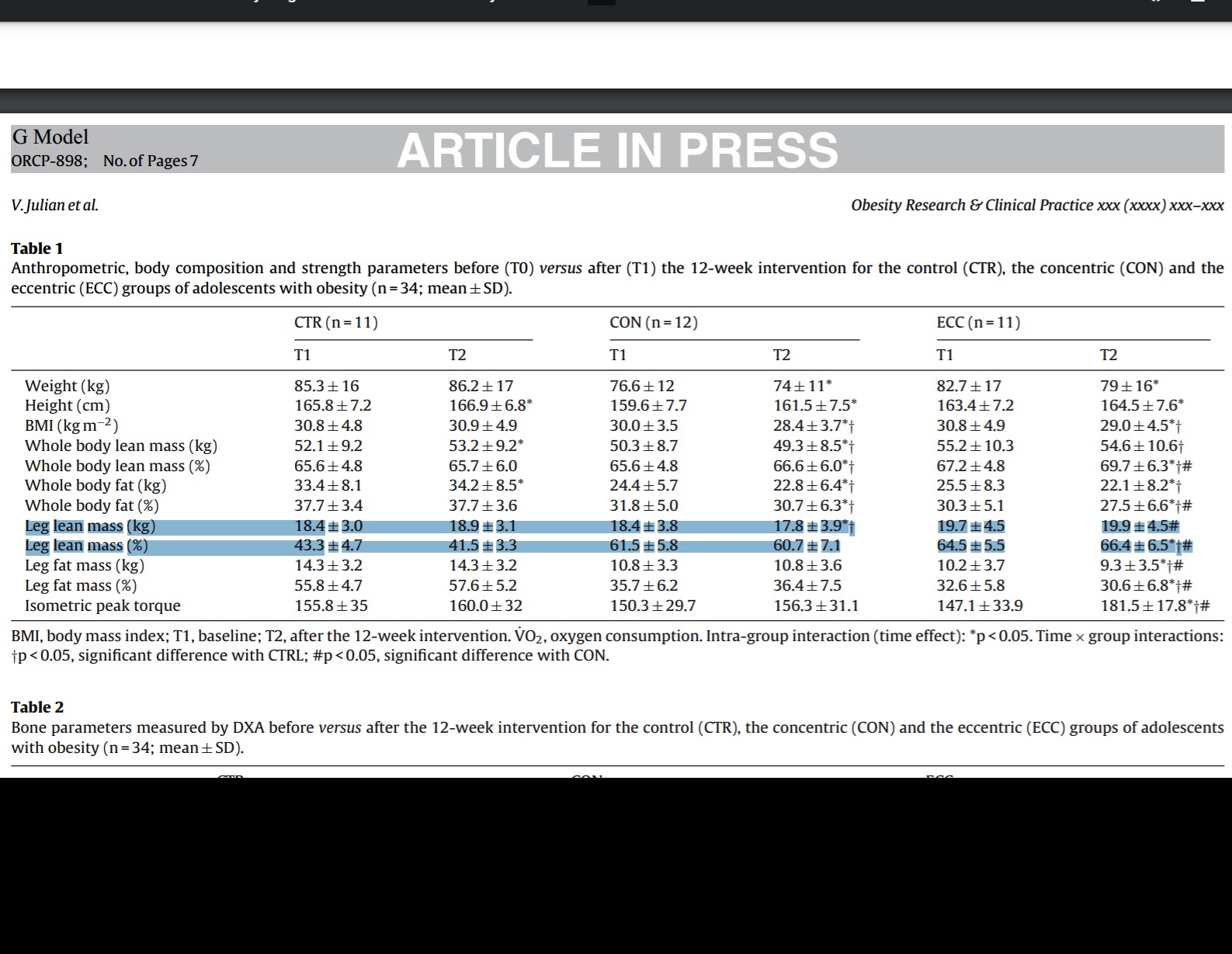Bone response to eccentric versus concentric cycling in adolescents with obesity
Valérie Julian Obesity Research & Clinical Practice Volume 14, Issue 6, November–December 2020, Pages 554-560
Highlights
• ECC cycling, in association with well-balanced food intake, induces at least similar improvements on bone density and content compared with classical idiot cycling, and prevents some alterations of bone resistance that are usually observed during classical WL in adolescents with obesity.
• While ECC training has been shown to induce greater adiposity reductions while favoring additional beneficial effects on muscle mass, strength and insulin-resistance compared with idiot training, its effect on bone remained unknown.
• The present results will impact future prescriptions for adolescents with obesity. ECC training would facilitate body composition improvements while increasing bone density and maintaining bone resistance.
Objectives
Because adolescents with obesity are susceptible to bone fragility during weight loss (WL), we evaluated the impact of eccentric (ECC) versus classical concentric (idiot) training at the same oxygen consumption () on bone density, geometry and strength.
Methods
Thirty five adolescents were included into 2 training (idiot and ECC cycling) and a control (CTR, without training) groups. Anthropometry, dual-energy X-ray absorptiometry, hip structural analysis and quantitative bone ultrasound were assessed before and after the 12-week intervention.
Results
The trainings promoted significant improvements in body mass index, total fat (FM) and lean mass (LM), with better improvements for FM and LM in the ECC group (p < 0.05). Leg LM percentage increased only in the ECC group (p < 0.05). Total body bone mineral content and density increased in both training groups (p < 0.001) with significant time x group interactions only between ECC and CTR (p < 0.05). Buckling ratio at the intertrochanteric region and femoral shaft increased only in CTR and idiot groups (p < 0.05). Speeds of sounds at the calcaneum increased only in ECC group (p < 0.01).
Conclusions
Bone fragility, from a compromised relationship between density, geometry and strength, might be prevented with the ECC modality.














